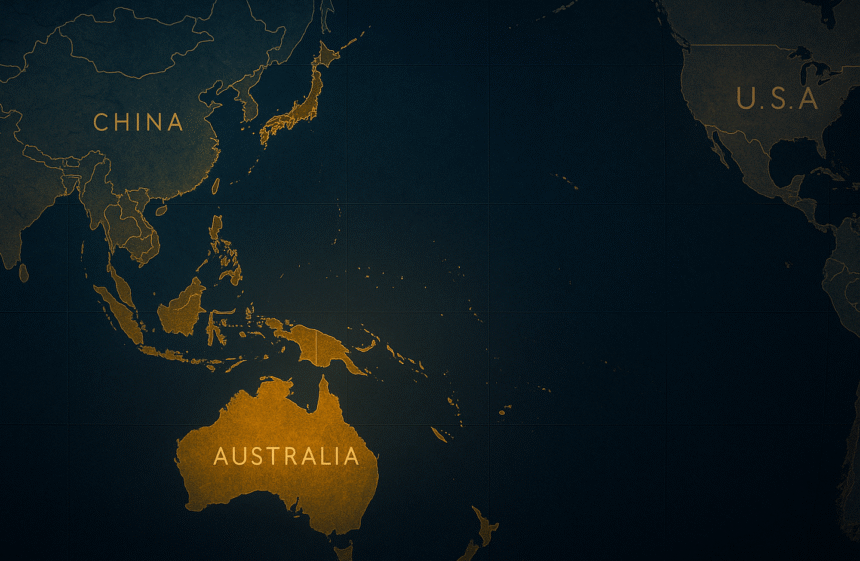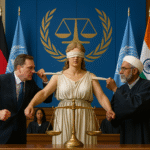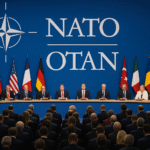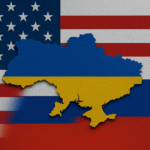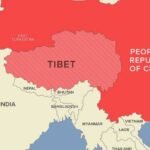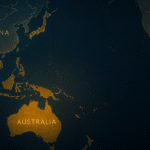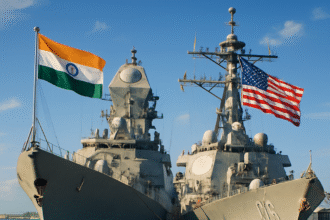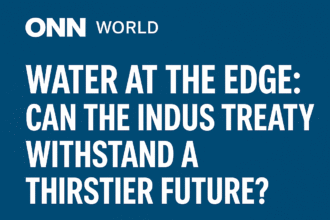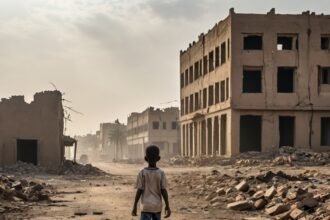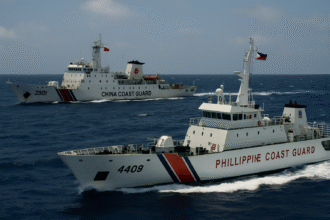“We are not just dots in the ocean…..”
— Henry Puna, Secretary General, Pacific Islands Forum
For generations, the Pacific Islands were an afterthought in global power games — stunningly beautiful, tragically vulnerable, and largely ignored. But in 2025, the story has changed.
Oceania has become one of the world’s most contested strategic arenas — where climate diplomacy meets military infrastructure, and where old colonial legacies collide with new power projections. The region is now central to how the next global order may be shaped.
The great powers have noticed. The question is — will they listen?
The Strategic Geography Everyone Forgot
The Pacific may seem remote on a map, but it covers one-third of the Earth’s surface. Its island nations — many with populations under a million — control vast exclusive economic zones (EEZs), some of the world’s most biodiverse ecosystems, and critical sea lanes linking the Indo-Pacific.
In an age defined by maritime power, undersea data cables, and supply chain security, this isn’t empty ocean. It’s a strategic superhighway.
From Guam to Fiji, from Palau to Papua New Guinea, global powers are scrambling for presence — physical, digital, and political.
The China Catalyst
The turning point came in 2022, when China signed a security agreement with the Solomon Islands — an unprecedented move that sparked alarm in Canberra and Washington. The deal allowed Chinese naval vessels to dock in the Solomons, raising fears of a potential PLA military footprint in Australia’s near abroad.
Since then, Beijing has accelerated engagement across the region:
- Port upgrades, police training, and infrastructure deals in Kiribati, Vanuatu, and PNG
- Telecom expansion via state-linked firms
- Regular high-level visits from Chinese envoys promising “win-win cooperation”
China frames its Pacific policy as developmental and anti-colonial. But its growing influence has also raised questions about debt diplomacy, elite capture, and long-term strategic intentions.
The U.S. Returns — Late, But Loud
After decades of relative disengagement, the United States is back in the Pacific.
Washington has:
- Reopened embassies in the Solomon Islands and Tonga
- Finalized a Defense Cooperation Agreement with Papua New Guinea (2023)
- Renewed Compacts of Free Association with the Federated States of Micronesia, Palau, and the Marshall Islands — giving it strategic access in exchange for economic support
- Promised $810 million in new aid over the next decade
But the U.S. faces a credibility gap. Many Pacific nations remember decades of neglect, and they’re wary of being used as pawns in a new Cold War. Still, the security and economic pull is real — especially when balanced against growing Chinese leverage.
Australia: The Traditional Anchor Reinvents Itself
For Australia, the Pacific isn’t just a neighborhood — it’s a national security buffer.
Canberra’s “Pacific Step-Up”, launched in 2018, has gained momentum in recent years:
- Defense deals with Fiji, Tonga, and PNG
- Maritime patrol boats delivered to 12 countries
- A $1.9 billion Pacific infrastructure financing facility
- Regular climate consultations and multilateral dialogues
Australia remains the largest aid donor to the region, but it’s increasingly seen as competing with China’s checkbook. Canberra has started to shed its paternalistic tone — now framing itself as a “partner of choice.” Whether Pacific leaders believe that remains uneven.
India: A Quiet but Calculated Outreach
India has been expanding its Indo-Pacific footprint — and the Pacific Islands are quietly part of that vision.
Through the Forum for India–Pacific Islands Cooperation (FIPIC), India has:
- Offered solar energy projects, e-governance support, and disaster resilience training
- Sent medical teams and educational missions
- Extended lines of credit to Fiji and Papua New Guinea
- Pushed for support on UN reforms and South-South cooperation
New Delhi positions itself as a non-Western, non-threatening development partner, keen to build relationships based on mutual respect and technology sharing — not military posturing.
Europe’s Residual Reach: France, the UK, and the Colonial Hangover
Europe, too, is reengaging — largely because it never fully left.
France remains a Pacific power through its territories in New Caledonia, French Polynesia, and Wallis & Futuna. It maintains military bases, naval patrols, and is part of regional disaster response efforts. In recent years, it has amplified climate aid and joined Australia and the U.S. in joint drills.
The United Kingdom, after Brexit, has reopened embassies in Vanuatu, Tonga, and Samoa, and is trying to rekindle old Commonwealth ties. But skepticism remains. Many Pacific leaders remember colonial exploitation — and expect more than symbolic gestures.
Russia: Peripheral but Present
Russia’s Pacific engagement is limited but persistent:
- Fisheries deals with island nations like Fiji and Vanuatu
- Occasional military ship visits
- Attempts to host Pacific leaders at Eastern Economic Forums in Vladivostok
While Moscow lacks deep regional roots, it uses the Pacific stage to challenge Western dominance symbolically — often emphasizing multipolarity and anti-sanctions rhetoric.
Climate: The Most Urgent Front
Yet amidst all this geopolitical maneuvering, Pacific leaders consistently emphasize one message: climate change is the real existential threat.
- Tuvalu and the Marshall Islands may become uninhabitable within decades due to rising seas
- Cyclones are more intense, droughts more frequent, and saltwater intrusion threatens food and water supplies
- Pacific nations are leading global climate diplomacy — often shaming major powers for inaction
At COP28, island states demanded loss and damage funding, not just adaptation aid. They’re leveraging their strategic relevance to force climate justice onto the global agenda.
As Fiji’s Prime Minister Sitiveni Rabuka recently said:
“We don’t want bases. We want our homes above water.”
Digital Battles and Data Sovereignty
A subtler, equally important struggle is playing out in the digital realm.
Control over undersea internet cables, satellite networks, and telecom infrastructure is increasingly strategic. Chinese firms like Huawei Marine were bidding to build regional cables — until Australia, Japan, and the U.S. offered “clean” alternatives.
The Pacific is now choosing between tech ecosystems, with long-term sovereignty implications. Some nations are developing data protection frameworks to guard against surveillance and cyber-dependence.
What the Pacific Wants
Amid the scramble, Pacific nations are asserting their own vision. The “Blue Pacific Continent” concept, championed by the Pacific Islands Forum, calls for:
- Regional unity
- Respect for sovereignty
- Development based on local priorities
- Security that includes food, water, and climate — not just military alliances
There’s a quiet but firm resistance to being cast as chess pieces on someone else’s board.
The Stakes: Global, Not Just Regional
Why does all this matter?
Because the Pacific isn’t just a battleground — it’s a barometer.
- If climate diplomacy fails here, it will fail everywhere.
- If great powers can’t respect the agency of small states, their entire “rules-based order” is a fiction.
- And if unchecked rivalry turns this region into another militarized zone, it may set a precedent for conflict elsewhere.
The Pacific Islands are not passive recipients of aid or influence. They are emerging leaders in global climate action, digital sovereignty, and geopolitical navigation.
And they’ve made it clear: they may be small, but they will not be silent.

